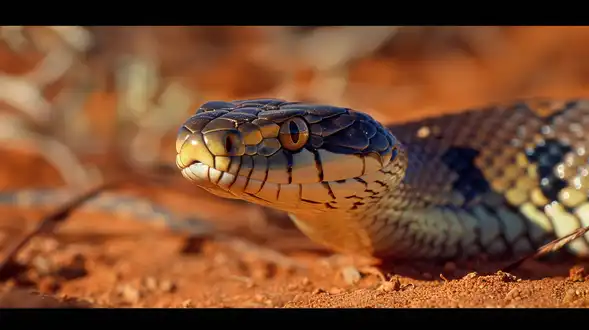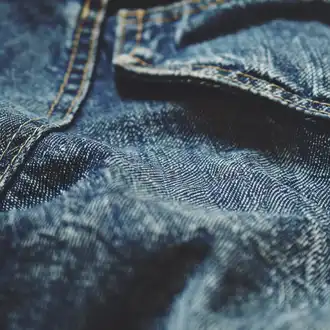Training and Assessment Delivered on Behalf of Allens Training Pty Ltd RTO 90909
Bitten Down Under: Navigating Australia’s Venomous Snakes

When I was 7 my dad was bitten by a snake multiple times. He lived thankfully. Since then, I’ve always feared snake bites. But when i started down the path of first aid I was amazed to learn that with a bit of knowledge a snake bite is not a death sentence! In fact, very few Australians who get proper first aid treatment die! That’s just awesome.
To ease your fears and make it easier for you to save lives I’ve made a Snake Bite Hub. It’s full of knowledge that can help. In this article in particular though we are going to do a deep dive of an FAQ and answer four questions about snakebite first aid that you may not have heard.
Can Snake Bites penetrate through clothing?

One common question we hear is whether snakes can bite through clothing, like a sturdy pair of jeans. The short answer is: it’s unlikely, but not impossible. Australia’s venomous snakes are elapids, meaning they have short, fixed fangs at the front of their mouths. These fangs are designed for quick, shallow strikes, making it difficult for them to pierce through thick fabric.
However, there’s always a chance that a snake could find a gap, like the space between your jeans and your boots, or a tear in your clothing. Plus, even if the fangs don’t break your skin, venom can still seep through the fabric and enter your body through any open cuts or scrapes. So, while jeans offer some protection, it’s best not to rely on them as your sole defense against snakebites.
Can cats die from Snake Bites?

It’s not just humans who are at risk of snakebites – our furry friends can fall victim too. In fact, it’s estimated that around 6,200 cats and dogs are bitten by snakes each year in Australia, with the Brown snake and Tiger snake being the most common culprits.
Snake venom is designed to take down small prey so our cats and dogs are an easy target. Without prompt treatment, there’s a real risk that your beloved pet could die from a snakebite. However, the good news is that with swift action and proper veterinary care, including antivenom treatment, the survival rate for pets can be quite high. For example, cats bitten by Brown snakes have a survival rate of up to 92% when treated promptly.
Traditional Indigenous Australian snakebite treatments
For thousands of years, Indigenous Australians have lived closely with the land and its creatures, developing a deep understanding of snakes and their bites. First Nations people had various traditional methods for treating snakebites, which often combined physical and spiritual approaches.
One fascinating example comes from the Jaanga people of inland Queensland. When someone was bitten by a snake, they would lay down under a tree and remain completely still for four to five days, relying on their community to bring them food and water. This method likely helped to slow the spread of venom through the body, giving the victim a better chance of survival.
Another common plant remedy was the sap of the Native or Cherry Ballart (Exocarpus cupressiformis), which was applied to snakebite wounds. While these traditional methods were used for millennia, it’s important to note that modern medical treatment with antivenom is the most effective way to treat snakebites today.
Do Compression Bandages work for all types of Snake Bites?
If you’re bitten by a snake in Australia, the most important thing to do is apply a compression bandage to the affected limb. This special bandage is wrapped tightly around the bite site and extended up the entire arm or leg, then secured with a splint to keep the limb immobilized. But why is this technique so crucial?

Well, it all comes down to how snake venom spreads through your body. When you’re bitten, the venom enters your lymphatic system, which is a network of vessels that helps to clear toxins and waste from your tissues. By applying a compression bandage and keeping the limb still, you’re essentially slowing down the flow of lymph, which in turn slows the spread of venom. This buys you valuable time to get to a hospital for antivenom treatment.
Now, here’s the key thing to remember: the compression bandage technique is specific to Australian snakes. In other parts of the world, like North America, different types of snakes (like rattlesnakes) require different first aid approaches.
For Example: Rattlesnake venom primarily attacks the circulatory system and tissues rather than the lymphatic system. The main components of rattlesnake venom are hemotoxins, which target red blood cells and cause tissue damage.
Here’s how rattlesnake venom typically affects the body:
- Hemotoxic effects: Hemotoxins in the venom damage the lining of blood vessels, leading to hemorrhage and impaired blood clotting. This can cause localized swelling, bruising, and internal bleeding.
- Tissue damage: Proteolytic enzymes in the venom break down proteins in the tissues surrounding the bite site, leading to necrosis (tissue death) and severe pain.
- Circulatory system effects: The venom can cause a drop in blood pressure, shock, and damage to the heart muscle.
- Neurotoxic effects (in some species): Certain rattlesnake species, like the Mojave rattlesnake, have neurotoxins that affect the nervous system, causing paralysis and respiratory failure.
Unlike some Australian elapid snakes, such as the Eastern Brown Snake and the Tiger Snake, whose venoms primarily spread through the lymphatic system, rattlesnake venom is more rapidly absorbed into the bloodstream. This is why the Pressure Immobilization Technique (PIT), which is designed to slow lymphatic spread, is not the primary first-aid recommendation for rattlesnake bites.
Instead, the focus is on keeping the bite area below the heart level to slow the venom’s progression through the circulatory system, removing constricting items, and seeking prompt medical attention for antivenom treatment and supportive care.
Wrap-Up
Thanks for joining us through this deep dive on snakebites in Australia. We hope it’s helped you grow your knowledge. If you’d like to learn more please check out the snake bite hub for more.
Remember, the best way to avoid Snake Bites is to be alert and cautious when you’re out exploring the Aussie wilderness. But if the worst should happen, now you know what to do. Stay safe out there, and happy adventuring!


